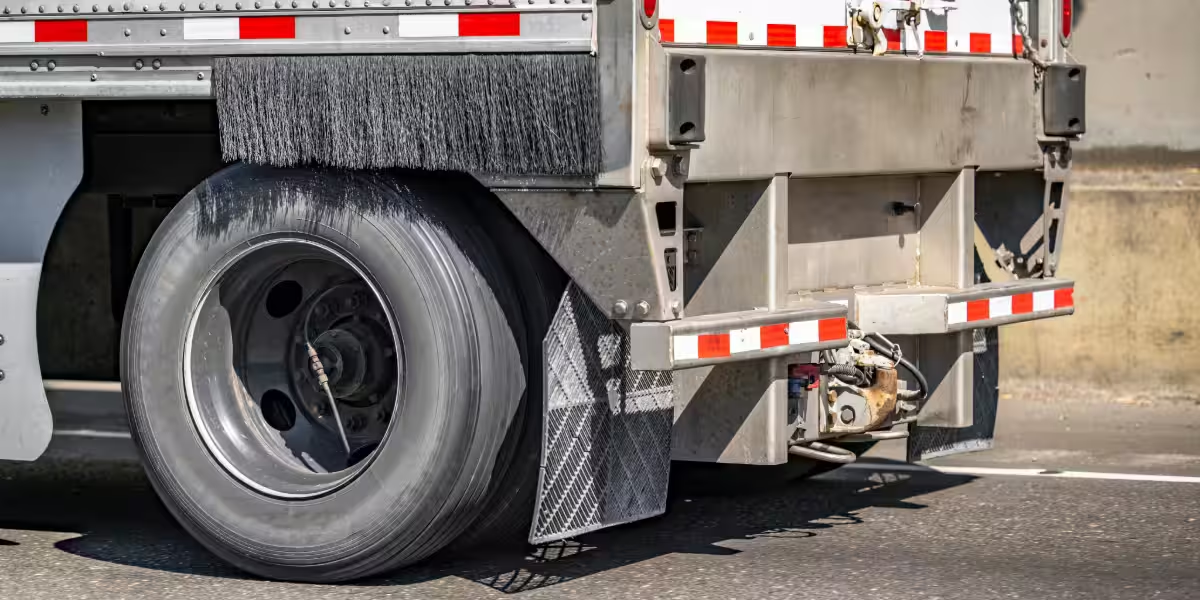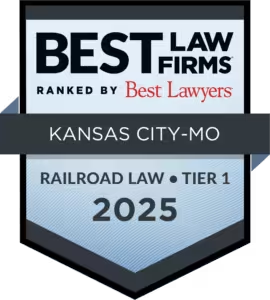
NHTSA Denies Families’ Request for Truck Rear Guard Probe Amid Rising Semi Collision Fatalities
In a recent update, the National Highway Traffic Safety Administration (NHTSA) denied a 2022 request from parents of children killed in commercial truck collisions to investigate current standards for truck rear guards. This decision comes amid a rising number of semi-truck collision fatalities in Kansas and Missouri. At Kendall Law Group, our Kansas City semi-truck accident injury trial lawyers keep you informed on road safety issues.
Understanding Truck Rear Guards
Truck rear guards, or underride guards, prevent passenger vehicles from sliding underneath large trucks during rear-end collisions. Without these guards, such collisions can result in severe injuries or fatalities, rendering the passenger vehicle’s safety features ineffective.
The Dangers of Underride Collisions
An underride collision happens when a passenger vehicle slides underneath a heavy truck during a collision, either at the rear (rear underride) or side (side underride) of the truck. These collisions are particularly dangerous because the lower frame of the passenger vehicle goes under the higher frame of the truck, bypassing the vehicle’s safety features designed to absorb crash impacts.
Why Are Underride Collisions So Dangerous?
- Impact Zone Mismatch: The impact zone typically involves the windshield and roof, which are not designed to withstand such force, resulting in severe head and neck injuries or fatalities.
- Safety Feature Bypass: Modern vehicles are equipped with crumple zones and airbags that protect occupants in standard collisions. In underride crashes, these features are bypassed, reducing their effectiveness significantly.
- Roof Shearing: The height mismatch between the truck’s undercarriage and the passenger vehicle can shear off the roof, posing a high risk of decapitation.
- Rescue Complications: The severity and complexity of underride collisions can complicate rescue efforts, potentially delaying medical assistance.
Preventative Measures for Underride Collisions
- Underride Guards: Metal bars installed on the lower rear and sides of trucks prevent passenger vehicles from sliding underneath, significantly reducing the severity of collisions.
- Regulations and Legislation: Advocacy for stricter regulations, like the Stop Underrides Act, aims to make improved underride guards mandatory for all trucks.
- Driver Awareness: Drivers can enhance their safety by maintaining safe following distances, staying alert, and understanding truck blind spots.
The History of Semi-Rear Guards in the US
The concept of rear underride guards emerged in the 1960s and 1970s when the trucking industry and safety regulators recognized the need to prevent deadly underride accidents. Initial designs were basic and often lacked the necessary strength. In the 1980s, the NHTSA implemented regulations requiring rear guards on trailers. By the 1990s, advancements in materials and engineering led to more robust guards, and in the 2000s, more stringent requirements for guard strength and energy absorption capabilities were introduced.
Current Regulations and Their Limitations
The Federal Motor Carrier Safety Administration (FMCSA) mandates that rear guards meet specific criteria under the Federal Motor Vehicle Safety Standard (FMVSS) 223 and 224. However, many safety advocates argue these standards, established in 1996, are outdated and do not adequately address modern road realities. Research by the Insurance Institute for Highway Safety (IIHS) indicates that rear guards meeting these standards are not always effective in preventing offset underride crashes. This has prompted manufacturers to develop stronger guards recognized by IIHS as meeting the “TOUGHGuard” level of strength in various crash scenarios.
The Petition and NHTSA’s Response
Families of crash victims and safety advocacy groups petitioned NHTSA to update the standards for truck rear guards, citing numerous studies highlighting the need for stronger regulations. However, in July 2022, NHTSA declined to mandate the installation of rear guards that prevent underride in all overlap conditions. NHTSA stated that while data supports the benefits of improved rear guards, current Federal standards serve as a minimum safety threshold, and manufacturers have the flexibility to design more robust guards even though they are not legally required to exceed these standards. Read the full petition HERE.
Implications of the Decision
- Continued Safety Risks: The risk of severe injuries and fatalities in rear-end collisions with trucks remains high due to the lack of stricter standards.
- Technological Advancements: While some manufacturers adopt stronger guards voluntarily, the absence of a regulatory mandate means many trucks remain without these improved safety features.
- Legal and Financial Challenges: For crash victims’ families, this decision represents a missed opportunity for systemic improvements that could prevent future tragedies. Stronger regulations could potentially reduce severe accidents, leading to fewer legal battles and associated financial burdens on victims’ families and the healthcare system.
Advocacy and Legislative Efforts
Despite NHTSA’s decision, advocacy groups continue to push for legislative changes. The proposed Stop Underrides Act aims to require improved underride guards on all trucks, ensuring comprehensive protection for all road users. This legislation seeks to close existing regulatory gaps and mandate the adoption of the best available safety technology.
Practical Advice for Drivers
While regulatory changes are debated, drivers can take proactive steps to enhance their safety:
- Maintain Safe Following Distances: Reduce the risk of rear-end collisions by keeping a safe distance from trucks.
- Stay Alert: Avoid distractions and remain vigilant when driving near large trucks.
- Understand Blind Spots: Be aware of a truck’s blind spots and avoid lingering in these areas.
Kansas City Truck Accident Injury Attorneys
At Kendall Law Group LLC, we understand the profound impact truck accidents have on victims and their families. Our dedicated team of Kansas City truck accident injury trial attorneys is here to help you navigate the legal landscape, fight for your rights, and seek the compensation you deserve. If you or a loved one has suffered a catastrophic injury or death in a collision caused by a commercial vehicle, we are here to help you put your life back together. Contact us for a free consultation at (816) 531-3100.
Additional Resources
The Rising Danger of Semi-Truck Fatalities in Kansas and Missouri






